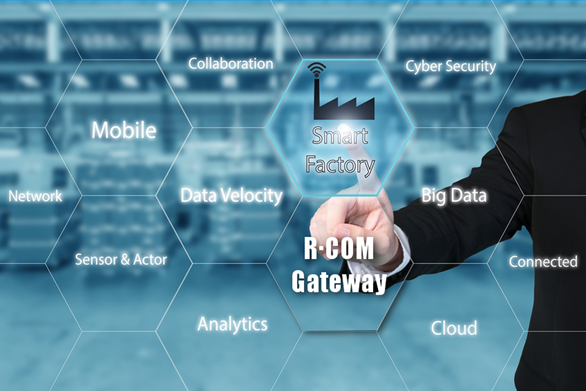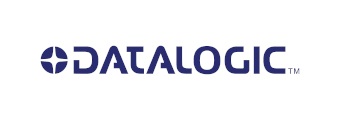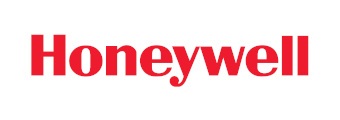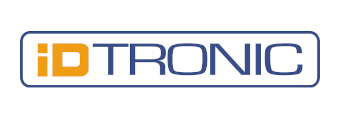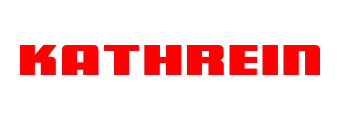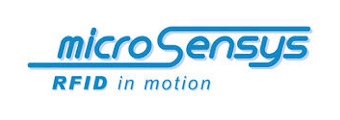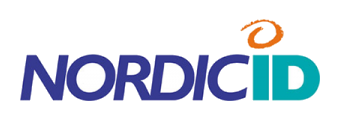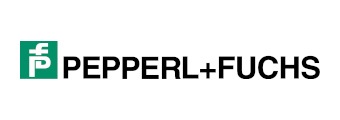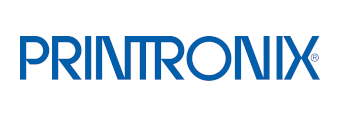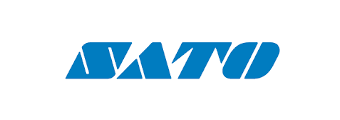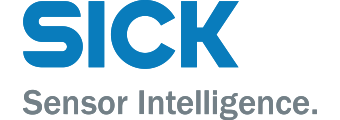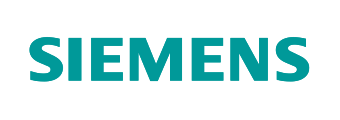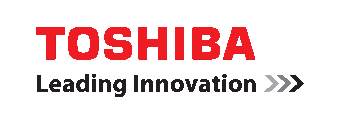RFID Middleware for Real Material Flows Without Digital Gaps
The device-independent RCOM Gateway is used specifically for RFID applications in logistics and production. The integrated set of rules, the UI design and the programming API enable the processing of events in logistics processes down to the smallest detail.
RCOM offers the user maximum flexibility. Numerous templates are available for common use cases. They can be quickly and easily adapted to individual requirements.
Device Management and Reader Control
The middleware plays a central role in the control and processing of object movements and load carrier events. The events are triggered by stationary RFID readers and the control devices in RFID gates.
The RCOM Gateway uses so-called agents, which can either be installed directly on the Linux core of the reader or as a Windows service on a server. These agents control the hardware via the manufacturer‘s API, which means that the middleware automatically takes new APIs, updates, and firmware changes into account
Track & Trace Module
With the track & trace module, the RCOM Gateway offers middleware that enables the localization of assets, load carriers or containers in real time via RFID identification. With just a few clicks, RCOM maps an overview of the entire plant and warehouse structure.
The combination of RCOM and geo-coordinates also enables localization and visualization on Google Maps. The module automatically draws the corresponding locations in the Google API. Inventory can therefore be tracked live at any time and at the exact location.
Configurable Rules
Only qualified and load carrier-relevant events are processed in the backend. For these qualified events, RCOM offers a sophisticated and user-friendly designer for configurable rules. The Workflow Designer can perform standard tasks through to detailed manual programming.
Important: It is not necessary to hire an IT specialist! Any logistician can make changes to the process logic independently and in-house.
Adaptable Web Interfaces
RFID identification enables automated data capture. The movements of the load carriers are therefore displayed visually by RCOM. The output of goods during loading, for example, must signal in real time that all goods have been successfully and correctly recorded. An ‘incorrect pallet or box’ must be immediately identifiable.
In practice, the display form and the associated data are different for each logistics process. RCOM has therefore integrated a UI designer so that masks can be created independently. These UIs can be equipped with individual user rights.
Material Flow
RCOM: The Control Center for Seamless Material Flow in Logistics
- Increased Efficiency
-
Targeted material flow planning optimizes all processes in the company. This includes the efficient use of resources such as time, labor and materials.
- Inventory Control in the Warehouse
-
Inventory can be precisely matched to production requirements and customer inquiries. In combination with AI algorithms, the analysis also determines future requirements. Excess inventory is a thing of the past.
- Cost Savings
-
An optimized material flow reduces costs. This applies to storage costs, excess stock, shrinkage, waste, energy costs and transportation costs.
- Customer Satisfaction and Quality
-
Efficient material flow planning results in shorter delivery times, reliable deliveries and satisfied customers.
- Environmental Friendliness
-
Avoiding unnecessary transportation and inventory reduces the ecological footprint.
- Competitiveness
-
Production runs more smoothly, operations are more efficient, customers are more satisfied, costs are kept under control – these are the advantages of optimum material flow control.
- Integration with IoT and AI
-
The integration of material flow planning, as well as RFID and IoT with artificial intelligence enables automatic analysis of location data to predict bottlenecks or optimize processes in real time.
Targeted material flow planning optimizes all processes in the company. This includes the efficient use of resources such as time, labor and materials.
Inventory can be precisely matched to production requirements and customer inquiries. In combination with AI algorithms, the analysis also determines future requirements. Excess inventory is a thing of the past.
An optimized material flow reduces costs. This applies to storage costs, excess stock, shrinkage, waste, energy costs and transportation costs.
Efficient material flow planning results in shorter delivery times, reliable deliveries and satisfied customers.
Avoiding unnecessary transportation and inventory reduces the ecological footprint.
Production runs more smoothly, operations are more efficient, customers are more satisfied, costs are kept under control – these are the advantages of optimum material flow control.
The integration of material flow planning, as well as RFID and IoT with artificial intelligence enables automatic analysis of location data to predict bottlenecks or optimize processes in real time.
Load Carriers
RCOM: Visualization of All Load Carrier Movements Along the Entire Supply Chain at a Glance:
- Container Identification
-
The unique identification of containers with RFID technology and the ability to track their location and status in real time are the key pillars for the digitalization of container management.
- Container Utilization
-
Maximizing the utilization of containers only works if their availability is known. Optimizing capacity planning means knowing the digital locations. Shrinkage is reduced.
- Automated Inventory Management
-
The integration of container management software with warehouse management systems (WMS) or ERP systems can be replaced by RCOM.
- Damage and Quality Control
-
Monitoring the condition and quality of load carriers means being able to clearly identify them.
- Supply Chain Partners
-
Seamless integration of suppliers, freight forwarders and other partners into the container management processes is crucial for efficient collaboration along the supply chain. This can be achieved through the exchange of data via standardized interfaces or the joint use of container pools.
- Sustainability
-
Modern container management systems are increasingly taking environmental aspects into account, for example by promoting the use of reusable containers, minimizing the CO2 footprint, or optimizing the disposal and recycling of containers.
The unique identification of containers with RFID technology and the ability to track their location and status in real time are the key pillars for the digitalization of container management.
Maximizing the utilization of containers only works if their availability is known. Optimizing capacity planning means knowing the digital locations. Shrinkage is reduced.
The integration of container management software with warehouse management systems (WMS) or ERP systems can be replaced by RCOM.
Monitoring the condition and quality of load carriers means being able to clearly identify them.
Seamless integration of suppliers, freight forwarders and other partners into the container management processes is crucial for efficient collaboration along the supply chain. This can be achieved through the exchange of data via standardized interfaces or the joint use of container pools.
Modern container management systems are increasingly taking environmental aspects into account, for example by promoting the use of reusable containers, minimizing the CO2 footprint, or optimizing the disposal and recycling of containers.
Intelligent Material Flow Control and Container Management at the next level!
Interested? Get in touch with us!


